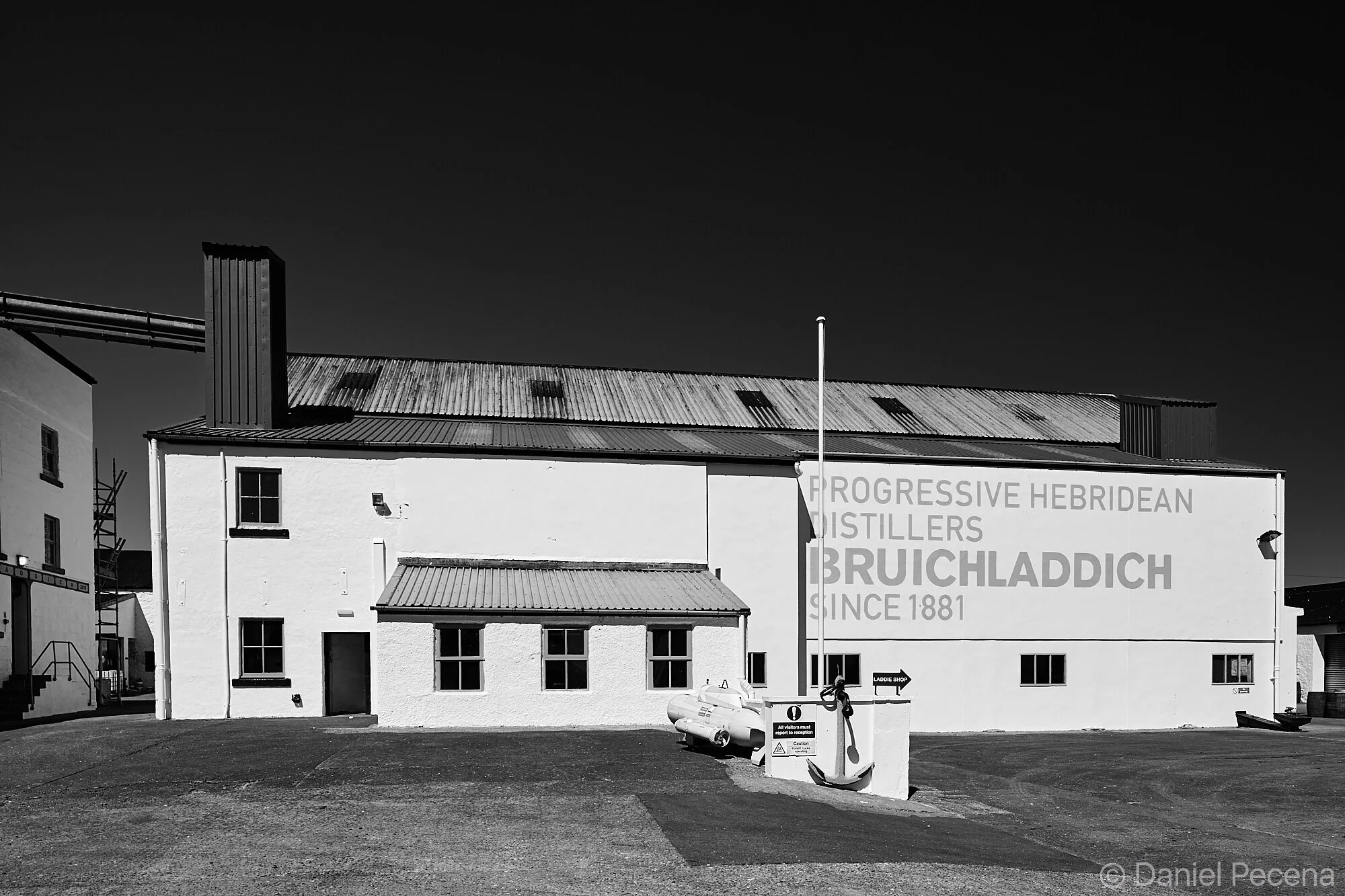Experiencing various landscapes in Scotland is in most instances a very pleasing affair. Unless of course, extensive rain does not become too much to bear or the biting midges do not make your stay hell on Earth. If so, there is always a way how to make all these hardships disappear. In Scotland there is more than 120 active distilleries and most of them are open to visitors.
Oban distillery
Whisky is inevitably most recognised product of Scotland and this fine spirit with its sheer variety of expressions has created a whole culture of appreciation that like wine spread all over the world. Whisky distilleries and their distinctive architecture are inherently linked in many peoples perception to Scottish landscape. The most recognizable feature of the distillery building may be its pagoda-like head on the top of kiln which was designed by architect Charles Chree Doig in 1889 and known for long time as “Doig Ventilator” (nowadays it is seldom in use for its original function but it is kept for its aesthetical value).
When I started to travel in Scotland as a young man I did not pay much attention to whiskies or distilleries themselves. The first distillery I have ever visited was The Ben Nevis distillery and that was after I climbed the mountain from which the distillery draws its name and so out of curiosity wanted to explore this connection. I was the only visitor there at the time and was taken around by the distillery manager himself. That was certainly before the whisky boom came around.
It came to me perhaps with maturity of age, like the whisky itself, that I started to appreciate the “uisge beatha” (scots Gaelic term for “water of life” and the term whisky has originally derived from) for what it is. I can recall one single event that has changed my attitude towards whisky completely. It was a whisky appreciation session which I was part of organised by my friend David some three years ago. He poured drams with whisky samples from all (at the time) active distilleries in Islay – a region known for its peated smoky whiskies. This tasting session was a revelation to me and it was also the time we started planning the Islay trip. We wanted to check out not only the island’s distilleries but also to encounter people who live here as well as to experience the surrounding landscape and the sea.
This trip has opened my eyes even more to whisky appreciation and since than I have visited over 25 different distilleries. After that many on the go, does it ever get boring? The facts about seemingly unbreakable malt mill (Porteus or Boby), distinctive shape of copper stills, angle of the lyne arms leading out of the stills (these contribute to whisky character) or percentage of Angel shares (whisky evaporation rate throughout the year) are often mentioned by the tour guides as their mantras. However, there is always something new, unique and surprising at every distillery – be it a distinctive production method, delivery and character of the tour guide or some other aspect of the local culture and history talked about. Since the first ever Visitor Centre opened by Glenfiddich in 1969 other distilleries followed the suit and began to welcome visitors in their grounds. Distilleries play essential parts in local economies – from barley growers, agricultural contractors, cooperages, glassware makers, hauliers to whisky book publishers. And on the top of the production of fine spirit these places have now created important cultural aspect that encourage tourism to the Scottish countryside. Most often I have visited distilleries with my friends so there is a great social facet to this experience as well as learning about local history and craft that has been part of Scotland for hundreds of years. After visiting many distilleries there are rather different details which you start paying attention to: like for example great view through very large windows across the Sound of Islay in the Stills room in Coal Ila distillery, free coffee in Laphroaig distillery in their cosy armchairs which was a lovely touch, great hospitality at Benromach or wonderful tour on Christmas Eve at Royal Lochnagar near the Balmoral Castle.
Sadly as the situation concerning the COVID-19 has escalated in the UK most distilleries will now be closed.
The International Whisky Day is being celebrated on the March 27th. Best to raise a glass and say: “Slàinte Mhath” which in Scots Gaelic means Good Health!
Ferry to Islay
Arrival in Port Ellen, Islay
Lagavulin distillery, Islay
Talisker distillery, Isle of Skye
Ben Nevis at night
Tower ridge, Ben Nevis at night
Ben Nevis distillery, Fort William
Ben Nevis distillery, Fort William
Glenkinchie distillery, East Lothian
Glen Ord distillery, Black Isle
Glen Ord distillery, Black Isle
Glen Ord distillery, Black Isle
Balblair distillery, Ross-shire. One of the oldest distillery in Scotland founded in 1790
Old Pulteney distillery, Wick, Caithness
Old Pulteney distillery, Wick, Caithness
Old Pulteney distillery, Wick, Caithness
Laphroaig distillery, Islay. Repainting the letterings on the warehouse.
Kilchoman distillery, Islay. Relatively new distillery established on the farm.
Bruichladdich distillery, Islay
On the ferry to Islay




















